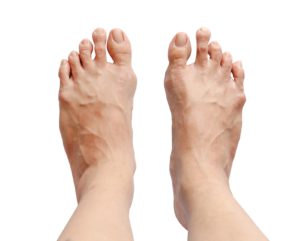Foot Tuck Surgery (Foot Shortening)
Foot Tuck Surgery (Foot Shortening) in Miami, is a specialized procedure offered at Luxe Foot Surgery. Tailored to help individuals dealing with discomfort or cosmetic concerns, our Miami-based clinic applies state-of-the-art techniques to ensure optimal outcomes. In this article, we will detail the surgical procedure, post-operation care, cost, and all other aspects of this unique surgery, offering a comprehensive guide for those considering this treatment path
- Updated on: January 15, 2024
AVERAGE COST
$15,000
PROCEDURE TIME
60 – 120 Min
BACK TO WORK
4 week
FULL RECOVERY
6 weeks
Book Your Free Consultation

What is Foot Tuck Surgery (Foot Shortening)?
Foot Tuck Surgery, also known as Foot Shortening, is a surgical procedure designed to reduce the length of the toes or the foot itself. This operation can be both a cosmetic and functional solution for individuals who experience discomfort or dissatisfaction with the size or shape of their feet.
How is Foot Tuck Surgery Performed?
The surgery involves making precise incisions to remove sections of the bone within the foot or toes. After the bone is removed, the surgeon will carefully realign and secure the remaining bones, tendons, and soft tissues to create a natural and aesthetically pleasing appearance. The exact method can vary based on the individual’s needs and the surgeon’s approach.
Who Can Benefit from Foot Tuck Surgery?
Foot Shortening is often sought by those who:
- Have disproportionately long toes that cause discomfort in shoes.
- Experience pain or difficulty in walking due to the foot’s size.
- Desire a more balanced or aesthetically appealing foot appearance.
Foot Tuck Surgery Cost
The cost of Foot Tuck Surgery (Foot Shortening) in Miami. The costs of surgery can vary widely depending on several factors, including the complexity of the procedure, geographical location, and whether medical insurance covers part of the cost.
It’s important to note that any surgical procedure should be discussed in detail with a medical professional, who can provide a cost estimate based on your specific situation.
Recovery from Foot Tuck Surgery (Foot Shortening)
Recovery from Foot Tuck Surgery is an essential phase of the procedure and requires careful adherence to specific guidelines to ensure proper healing and optimal results. Here’s an overview of the typical recovery process:
Immediate Post-Surgery:
- Special Footwear: You may be required to wear a surgical shoe or boot to protect the foot and maintain proper alignment.
- Pain Management: Over-the-counter pain relievers or prescribed medications may be used to manage discomfort.
- Elevation and Rest: Elevating the foot and taking time to rest helps reduce swelling and promotes healing.
First Few Weeks:
- Wound Care: Keeping the incision site clean and following care instructions is crucial to prevent infection.
- Limited Mobility: Movement may be restricted, and weight-bearing on the treated foot may be limited.
- Physical Therapy: Gentle exercises or physical therapy might be introduced to restore function and flexibility.
Long-Term Recovery:
- Gradual Return to Normal Activities: Depending on healing progress, a gradual return to normal activities, including wearing regular shoes and engaging in exercise, will be guided by your healthcare provider.
- Continued Monitoring: Regular follow-up appointments with your surgeon will monitor healing progress and address any concerns.
- Full Healing Time: Complete recovery can take several weeks to a few months, depending on the complexity of the surgery and individual healing response.
What are the Risks and Considerations of Foot Tuck Surgery (Foot Shortening)?
Foot Tuck Surgery, while offering the potential for improved comfort and aesthetics, comes with inherent risks and considerations that must be understood before proceeding. Here’s a breakdown of potential concerns:
Surgical Risks:
- Infection: As with any surgery, there’s a risk of infection at the incision site, which must be monitored and treated if necessary.
- Nerve Damage: The surgery might cause temporary or permanent damage to nerves, leading to numbness or other sensations.
- Blood Clots: Rarely, blood clots can form, posing serious health risks.
- Scarring: Surgical scars may remain, though skilled surgeons aim to minimize visible scarring.
- Delayed or Poor Healing: Healing might take longer than expected, or bones may not heal properly, requiring additional treatment.
- Changes in Foot Sensation: Some patients may experience altered sensations in the foot, such as tingling or stiffness.
Functional and Aesthetic Considerations:
- Altered Foot Function: Changes in foot structure might affect the way you walk or your balance, potentially requiring physical therapy.
- Cosmetic Outcomes: Expectations regarding the cosmetic outcome should be realistic; dissatisfaction with the appearance is possible.
- Potential for Further Surgery: If complications arise or if the desired outcome is not achieved, additional surgeries might be necessary.
- Impact on Footwear: The surgery may limit the types of shoes you can comfortably wear, at least temporarily.
The Foot Tuck Surgery Procedure (Foot Shortening)
Here’s a step-by-step guide to what the procedure typically involves:
1. Consultation:
- Assessment: A thorough evaluation of the foot’s structure, the patient’s medical history, and understanding the desired outcomes.
- Planning: Determining the best surgical approach, including which toes or parts of the foot will be shortened.
2. Preparation:
- Medical Tests: May include X-rays, blood tests, or other evaluations to ensure readiness for surgery.
- Pre-Surgical Guidelines: Includes instructions regarding medications, diet, or other preparations.
3. Anesthesia:
- Local or General Anesthesia: Depending on the extent of the surgery, local or general anesthesia may be administered to ensure patient comfort.
4. The Surgical Procedure:
- Incisions: Precise incisions are made in the areas that will be shortened.
- Bone Removal: Sections of the bone are removed from the targeted areas.
- Realignment and Reconstruction: The remaining bones and tissues are realigned and secured, often with screws or other hardware.
- Closure: Incisions are closed with sutures, and dressings are applied.
5. Immediate Post-Surgical Care:
- Observation: The patient is monitored to ensure stability and comfort as anesthesia wears off.
- Discharge Instructions: Detailed instructions for home care, pain management, and follow-up appointments are provided.
6. Recovery:
- Initial Recovery: Includes wearing special footwear, adhering to mobility restrictions, and following care instructions for the incision sites.
- Long-Term Recovery: Gradual reintroduction of normal activities and potential physical therapy, as guided by the healthcare provider.
7. Follow-Up:
- Regular Appointments: Monitoring healing progress, managing any concerns, and ensuring satisfactory outcomes.
Frequently Asked Questions
This surgery is often needed for individuals who experience physical discomfort and pain due to a disproportionately long foot, which can hinder their ability to walk or run comfortably and may limit footwear options. It can also be used for aesthetic reasons or to correct foot deformities.
As with any surgical procedure, Foot Tuck Surgery carries potential risks and complications, including infection, nerve damage, blood clots, nonunion or malunion of the bone, persistent pain, and complications from anesthesia.
After the surgery, your foot will be bandaged and you will be given a post-op shoe to use for walking. You should keep your foot elevated as much as possible to reduce swelling and promote healing. You may bear weight as tolerated on your heel immediately after surgery, but avoid putting weight on the front of your foot or toes for 4 weeks after surgery.
The recovery time can vary depending on the individual patient’s health and the specifics of their surgery, but generally, patients may begin normal walking 4 weeks after surgery and continue to use a post-op shoe for walking until 8 weeks after surgery.
Yes, the goal of Foot Tuck Surgery is to improve foot function and comfort, which should allow you to walk normally after recovery. However, the exact outcomes can vary depending on individual circumstances.
Coverage for Foot Tuck Surgery can vary widely depending on your insurance provider and plan. It’s important to check with your insurance company to understand what is covered.
Yes, one of the goals of Foot Tuck Surgery is to make it easier for individuals to fit into standard shoe sizes. However, during the recovery period, you will need to wear a special post-op shoe to protect your foot.
The success rate of Foot Tuck Surgery can vary depending on a variety of factors, including the skill and experience of the surgeon, the specific techniques used, and the individual patient’s health and adherence to post-operative care instructions. It’s important to discuss this with your healthcare provider.
Latest Articles

Bunion Surgery With Morton’s Toe Shortening Explained
Bunions and Morton’s toes are common podiatric conditions – sometimes, they can be found on the same foot. If you’re

Is Toe Shortening Surgery Safe? A Comprehensive Overview
Toe shortening surgery is a cosmetic surgical option that aims to alter the length of the toes for primarily aesthetic

Toe Shortening Surgery in Florida: What You Need to Know
Do you desire to undergo toe shortening surgery in Florida? Whether it’s to improve functionality, enhance aesthetics or alleviate annoying

Failed Hammertoe Surgery: Causes, Complications, and Solutions
No matter how experienced a doctor is or how routine the procedure, every surgery poses a certain amount of risk

Toe Shortening Surgery in Atlanta: A Comprehensive Guide
Foot health is always overlooked until a person starts having difficulties while walking and standing for longer periods of time.

What to Expect 1 Month Post Op Toe Shortening Procedure?
Toe shortening is a simple, minimally invasive procedure that aims to correct Morton’s toe, otherwise known as the long toe.

When to Consider Plantar Wart-On-Toe Removal Surgery
Plantar warts are often unpleasant and can cause plenty of pain. If you want to get rid of them, you

Toe Shortening Procedure
If you have a long toe that’s been keeping you from fully enjoying your everyday activities and causing you discomfort,

The Benefits of Hammer Toe Surgery With Toe Shortening
Hammer toe can limit a person’s ability to carry out daily activities and walk comfortably. When conservative treatments fail to

What Is the True Cost of Toe Shortening for 6 Toes
Do you need a cosmetic procedure to alter the length of your toes? Patients who desire to have a more

How Does Toe Shortening Surgery Work?
If you’re struggling with a long toe, one of the most common foot deformities, you must have heard about a

All You Should Know About Toe Shortening Surgery in New York
It’s high time you’ve done something about your longer toes, which have been causing pain and discomfort, not to mention